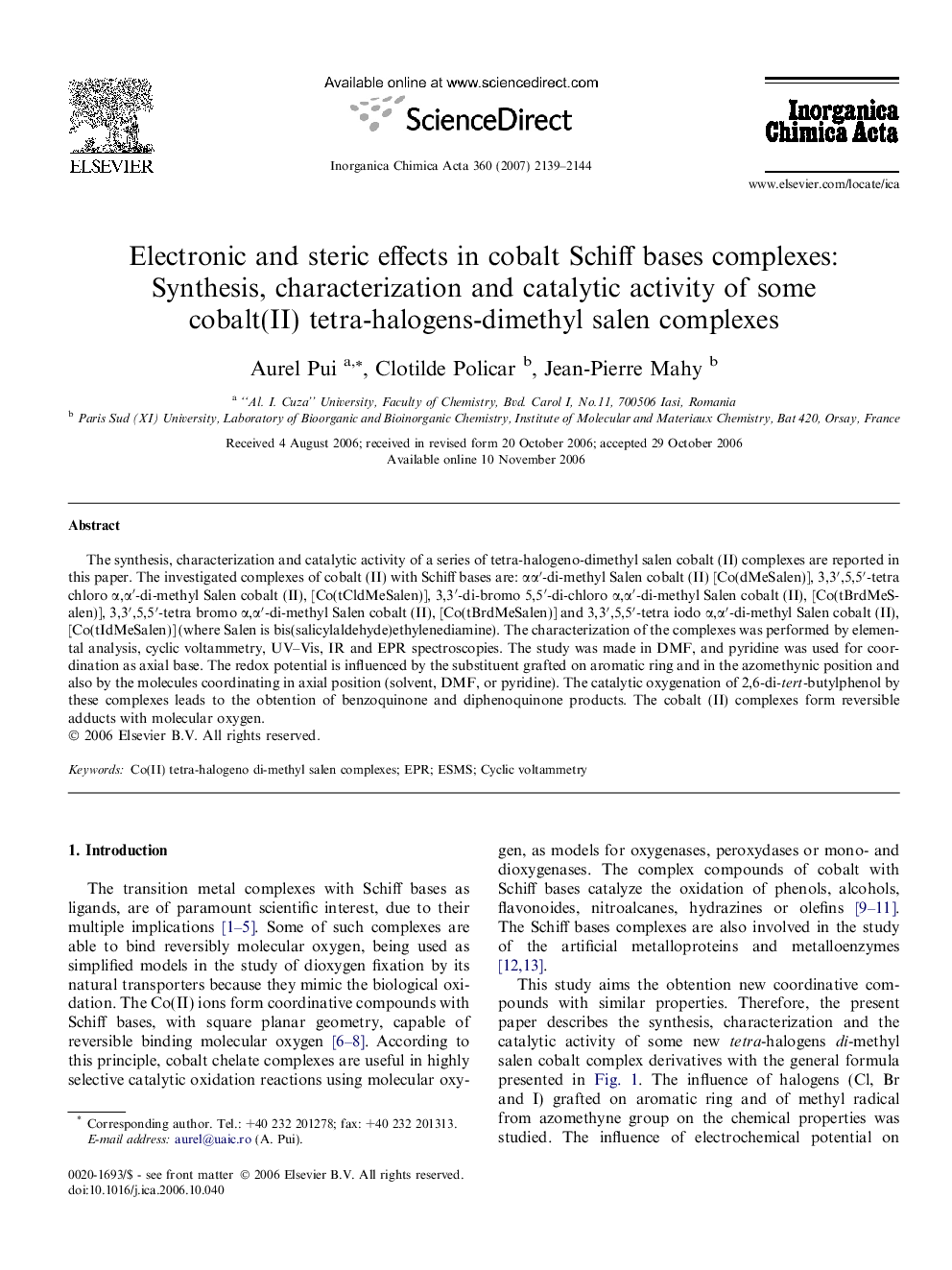| Article ID | Journal | Published Year | Pages | File Type |
|---|---|---|---|---|
| 1310477 | Inorganica Chimica Acta | 2007 | 6 Pages |
The synthesis, characterization and catalytic activity of a series of tetra-halogeno-dimethyl salen cobalt (II) complexes are reported in this paper. The investigated complexes of cobalt (II) with Schiff bases are: αα′-di-methyl Salen cobalt (II) [Co(dMeSalen)], 3,3′,5,5′-tetra chloro α,α′-di-methyl Salen cobalt (II), [Co(tCldMeSalen)], 3,3′-di-bromo 5,5′-di-chloro α,α′-di-methyl Salen cobalt (II), [Co(tBrdMeSalen)], 3,3′,5,5′-tetra bromo α,α′-di-methyl Salen cobalt (II), [Co(tBrdMeSalen)] and 3,3′,5,5′-tetra iodo α,α′-di-methyl Salen cobalt (II), [Co(tIdMeSalen)] (where Salen is bis(salicylaldehyde)ethylenediamine). The characterization of the complexes was performed by elemental analysis, cyclic voltammetry, UV–Vis, IR and EPR spectroscopies. The study was made in DMF, and pyridine was used for coordination as axial base. The redox potential is influenced by the substituent grafted on aromatic ring and in the azomethynic position and also by the molecules coordinating in axial position (solvent, DMF, or pyridine). The catalytic oxygenation of 2,6-di-tert-butylphenol by these complexes leads to the obtention of benzoquinone and diphenoquinone products. The cobalt (II) complexes form reversible adducts with molecular oxygen.
Graphical abstractThe present paper describes the synthesis, characterization and the catalytic activity of one serie of tetra-halogens di-methyl salen cobalt (II) complexes, Co(dXdYdMeSalen). The properties, including redox potential, are influenced by the substituent grafted on aromatic ring and in the azomethynic position and also by molecule from axial position (solvent, DMF or pyridine).Figure optionsDownload full-size imageDownload as PowerPoint slide
